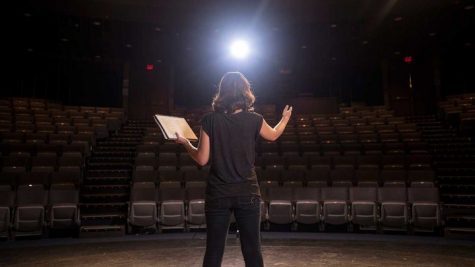‘Spider-Man: Homecoming’ review: Putting ourselves under the mask
With the power of choice regarding what to do this weekend comes the weight of responsibility. When the clock strikes 8PM on this Friday, the most sensible choice to make next to studying is choosing to view “Spider-Man: Homecoming” in the Covenant Fine Arts Center.
Whether you’re a lifelong Spidey fan or not, this movie has a lot to offer fans of all film genres and delivers a healthy dose of nostalgia toward the younger, more vulnerable days of high school. The newest era of superhero movies tends to reach deeper than a weak plotted super-villain beat ‘em up flick, and this film follows suit offering helpful insights into moral choices by relatable characters with resonant issues. This version of the friendly web-slinging neighborhood Spider-Man (Tom Holland) is no exception; it reaches into the core of what comic book movies have to offer.
Aside from the huge leaps in special effects and universe-building canon that Marvel has risen to fame for, this movie works to give us a more intimate character study true to Spider-Man’s comic book self. It shows audiences that a small-scale superhero film can act just as effectively to entertain audiences and quench the thirst for new characters and stories in the Marvel Cinematic Universe as the bigger collaboration movies we’ve seen before.
The story takes place after Peter’s airport appearance in “Captain America: Civil War” (as shown to us through a comical homemade Peter Parker film) and works to build Spider-Man as the uncertain and time-stretched hero that fans have come to love. What makes Spider-Man such an identifiable hero is the “every man” nature he carries as a burden after receiving his powers. Though he can swing seamlessly amidst the Manhattan skyline or stop bike thieves with ease, he has not rid himself of the everyday struggles of dealing with bullies, romantic feelings for people he’s too scared to talk to or Spanish tests he neglected to study for.
While most heroes successfully separate their civilian identity from their superhero persona, Peter and Spider-Man are constantly suffering from role-strain and many times choosing one role that negatively affects the other — whether it be through weakened relationships with friends or not being able to help those in need while school is in session.
Peter shows the audience that even when he gives his best, he still is highly susceptible to failure; he’s unlike a lot of other heroes we’ve been exposed to on the screen and more like the people that are watching the movie. Like the audience, Peter suffers from not always being able to make everyone happy all the time, and we are shown how this takes a toll on both roles he is trying to fulfill.
As we see in the majority of other hero movies, the protagonist generally suffers a single failure and redemption is found in the final battle, but viewing this movie proves refreshing as Peter is constantly failing while trying to better himself. He learns that sometimes failure is necessary in the betterment process — a strong message to which nearly every viewer can relate.
Finding a refreshing take on an age-old character coming into the third actor reboot, after five rather mediocre films, is a spectacle in itself. With Holland’s precise execution of the part which accurately embodies the character, it’s easy to connect with his uncertainty as he works to transform his actual self into his ideal self of what a hero should be. At the same time, the film allows us to find joy in the wit and humor of the writing, providing a balance that can make us feel human in the midst of fictional heroism. You will see an intimate story that unpacks a flawed human hero on the screen — a hero that we can accurately see ourselves under the mask of. A hero trying to navigate the labyrinth of life through responsible or irresponsible decisions that every person is called to make on the undulating path that is day-to-day life.










